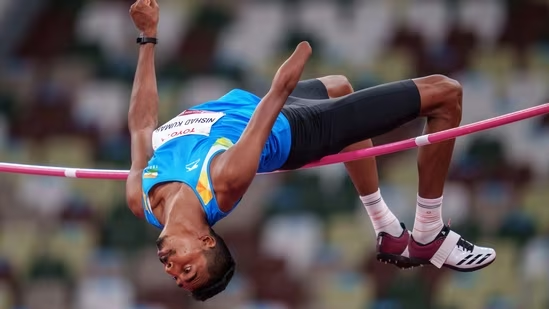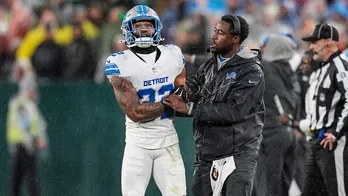Nishad lands high jump silver at Tokyo Paralympics
Nishad Kumar closed his eyes, visualised his jump and approached the runway with fierce determination. Approaching with long strides, he sailed over the bar smoothly, clearing 2.06m. A celebratory back flip followed. The jump had sealed the high jump silver in the T47 category at the Tokyo Paralympics on Sunday.

The 21-year-old shed tears of joy as he spoke to his mother, moments after he stood on the podium and saw the tricolour raised. Exceptional grit had carried the day for Nishad, whose right upper limb had to be amputated when he was eight after it was caught under a grass cutting machine at the family farm in Una, Himachal Pradesh. His father is a farmer, and despite the serious accident, Nishad’s family never made him feel the loss.
Two years on, the youngster was running in his school playground, keen to take up a sport. The traumatic accident had only steeled him. “My parents always encouraged me to take up sport. Not once did my mother tell me “you cannot do what you want to do”, or “you cannot excel in sports”, or “tu aam logo ke saath khelne mat jaa” (don’t go and play with normal people),” said Nishad.
“I was in the fifth standard, running and doing high jump. I focused on high jump because my physical education teacher said “you have good height and will do well in high jump”.”
He said: “When I spoke to my mother today, she said she was so happy and proud of me. My father said “our house is jam-packed with people cheering for you—bahut bheed jama hui hai.” I want to dedicate this medal to my mother and my country.”
Nishad was competing in his first Paralympics, but there were no nerves. He cleared 1.89m and 1.94m in the first attempt, and 1.98m and 2.02 in the second attempt before equalling his personal best of 2.06m. Roderick Townsend of USA won gold (2.15m). Dallas Wise of US was also awarded silver after clearing 2.06m. India’s other entry, Ram Pal, was fifth (1.94m). The T47 class denotes athletes with unilateral upper limb impairment.
“Whenever I attempt a jump of over 2m I try to visualise first—how I will run, how I will take off, how my body position will be mid-air, how will I leap over, how will I land. That’s what I did before the 2.06m jump,” Nishad said.
World No. 3 in his category, Nishad started competing internationally in 2019. He won gold at the Fazza Para Athletics Grand Prix in Dubai in 2019 and 2021, and bronze at the world meet in Dubai clearing 2.0m, which secured a quota place for Tokyo.
For Nishad, it is a long journey from 2017 when he was competing at the school nationals alongside able-bodied athletes. He finished 10th with a jump of 1.75m before moving to Panchkula to train at the Tau Devi Lal Stadium.
“Any athlete from a lower-middle or middle-class background is likely to have seen days of struggle. In 2017, I left my home to go to Punchkula and my mother handed me ₹2,500. It went up to Rs. 25,000 to Rs. 30,000 per month for training but my family never complained. They would save up on whatever money they earned to ensure that my training continued.”
Later, he was trained by para-sports coach Satyanarayana, who has trained some of India’s best para-athletes. “He has been training under me for two years. Nishad is very talented and disciplined, always focused and wanting to improve,” said Satyanarayana.
It was only during the 2016 Rio Paralympics that Nishad came to know about para sports. Asked what the medal meant for him, Nishad said, “This is my lucky charm. This jump and this medal will change my life. For any competitive athlete, participating in an Olympics or a Paralympics is a big deal. For me, winning a medal tops everything else. Ab meri life badlegi, aur meri family ki bhi.”
Disclaimer: The copyright of this article belongs to the original author. Reposting this article is solely for the purpose of information dissemination and does not constitute any investment advice. If there is any infringement, please contact us immediately. We will make corrections or deletions as necessary. Thank you.







